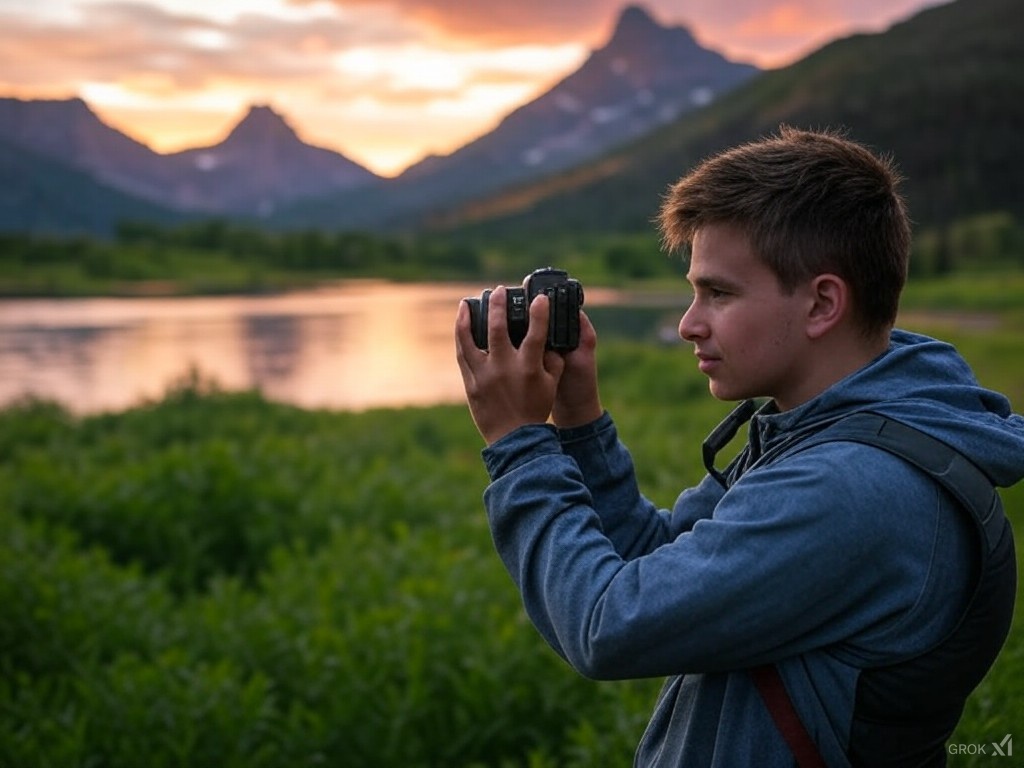How To Become a Photographer and Share Your Photos
How To Become A Photographer and The Best Ways to Share Your Photos Online and To The Public.
Are you passionate about capturing moments, landscapes, or portraits? Photography can be a fulfilling career or a lucrative weekend hobby.
Guide to Photography
Here’s a comprehensive guide to help you turn your passion into a business, whether you aim for part-time weekend work or a full-time career in photography.
Choosing Your Niches
Main Niche: Start by identifying what you love to photograph most. Are you drawn to the serene beauty of landscapes, the dynamic expressions in portraits, or the abstract in fine art? Your main niche should align with your passion and where you see potential for growth.
Example: If you’re inspired by nature, landscape photography could be your main niche.
Secondary Nich(es): These should complement your primary focus or help diversify your income for instance.
Example: A landscape photographer might also delve into macro photography for seasonal variety or wedding photography for more consistent income.
Branding Your Business
Company Name: Choose a name that reflects your style or niche. “WildLens” for a landscape photographer, or “Portraiture by [Your Name]” for personalized branding.
Logo Design: Your logo should be memorable and reflect your photography style. Use online services like Canva or hire a designer from platforms like Fiverr or 99designs.
Legal Considerations
Incorporation: Decide between a sole proprietorship, LLC, or another business structure. Forming an LLC may offer personal liability protection.
Business Licenses and Permits
Check local requirements for business licenses.
For national parks or protected areas, permits are often needed. Visit the National Park Service’s website for specifics.

Marketing Your Photography
Online Presence: Build a website with galleries showcasing your best work. Use social media platforms like Instagram and Pinterest, which are visual-centric.
Create A Custom Photo Website in Minutes
Networking: Attend workshops, photography clubs, and local events. Networking can lead to collaborations or referrals.
SEO and Content Marketing: Write blog posts about your experiences, tips, or local attractions to attract organic traffic.
Camera and Gear for Different Niches
Landscape Photography:
Camera: Full-frame DSLR or mirrorless like Canon EOS 5D or Sony A7 series.
Lenses: Wide-angle (16-35mm), ND filters, sturdy tripod.
Portrait Photography:
Camera: Good low-light performance, like Nikon Z6 or Fujifilm X-T4.
Lenses: 50mm or 85mm prime lenses for flattering portraits.
Fine Art Photography:
Camera: High resolution for detail, e.g., Hasselblad X1D or Sony A7R series.
Lenses: Various focal lengths for creative flexibility.
Get the Canon EOS 5D Mark IV Digital SLR Camera
Photographer Pricing and Packages
Pricing Strategy: Consider cost-based, market-oriented, or value-based pricing.
Example: Start with packages for sessions: basic ($300), standard ($500), deluxe ($800) covering different services and products.
Photography Packages: Offer session types (engagement, family, corporate), and include options like prints, digital files, albums.
Insurance for Photographers
Equipment: Insure your photography gear against theft, damage, or loss.
Liability: General liability or an umbrella policy for broader coverage, especially if you work in public spaces or have clients in your studio.
Travel: If you shoot on location, travel insurance covers gear during transit.
Managing Slow Seasons
Diversify Income: Offer workshops, sell prints online, or create stock photography.
Seasonal Workshops: Capitalize on off-season for teaching or local tours.
Setting Client Expectations
Contracts: Clearly outline terms regarding cancellations, no-shows, and payment schedules.
Communication: Educate clients on the process, including why raw images are not provided, and set expectations for delivery times.
Policy on Unedited Photos: Explain the artistic value of editing, but offer some unedited shots for a fee if requested.
Photo Sharing Business Solutions
If your goal is to share high-quality photos and make sales, you’ll want to use a professional online platform. SmugMug offers both a system that allows for secure photo sharing, and apps for retrieval.

Sharing Your Photos Online
Social Media: Engage on platforms where your audience is, use hashtags, and consider paid promotions for exposure.
Prints and Exhibitions: Local galleries, cafes, or art fairs can showcase your work physically, providing a tangible experience for viewers.
Get Started and Become a Photographer
By following this guide, you’ll be well on your way to establishing yourself as a photographer. Remember, the key is continuous learning, networking, and adapting to the ever-evolving photography industry.
Read more: How To Profit In Any Economy
If you purchase through our sponsor links, we may earn an affiliate commission. Thanks for reading!
